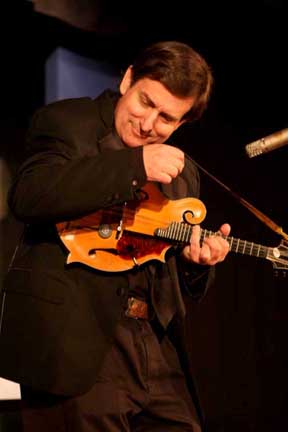Once a mainstay of the Baroque and Classical periods, the mandolin’s importance fell off a bit during the 19th and most of the 20th century. An instrument with ancient roots, the mandolin enjoyed great prominence during the Baroque period, inspiring a slew of concertos by some of the era’s most famous composers, including Antonio Vivaldi.
With the rise of the Romantics at the beginning of the 19th century, the mandolin experienced a transformation: It went from being an instrument associated with classical music to being associated with folk music. (Its delicate and shimmering sound would occasionally be employed by composers such as Mahler, Zemlinsky and Webern.) By the late part of the century, the mandolin became a favorite instrument of the public. Orchestras consisting solely of various mandolins were formed in Germany, Italy, France and the United States – the zenith of the instrument’s popularity coinciding with the early years of recording technology.
Though subsequent to World War I the mandolin’s favor was dimmed by a public beginning to discover the new sounds of jazz and light music orchestra of the 1920s, its popularity remained undimmed in surprising places. In Japan, for example, the mandolin became a staple of popular music and, later, enka and even film music in large part thanks to Koga Masao, one of the country’s foremost popular song composers and himself a formidable mandolinist.
Today the mandolin has enjoyed a resurgence of interest worldwide. In the United Stated greater academic attention is being given to American roots’ music and the crucial role the instrument played there, while new classical compositions for it are being written.
Evan J. Marshall, a mandolinist who has earned praise from Chet Atkins among others, is set to present a capsule history of his instrument on Wednesday, July 5.
In a wide-ranging program of folk music and some seemingly unlikely transcriptions for solo mandolin, Marshall will be displaying the full breadth of his virtuosity as well as the mandolin’s capacity for expression and color.
Part of the Glendale Noon Concerts, the recital will take place Wednesday, July 5 at the Glendale City Church (610 E. California Ave., corner with Isabel Street) and begin at 12:10 p.m. Admission is free to the public. For more information, please go online to http://glendalenoonconcerts.blogspot.com/. You may also email Victoria Lucero at glendalesda@gmail.com or call (818) 244-7241.

